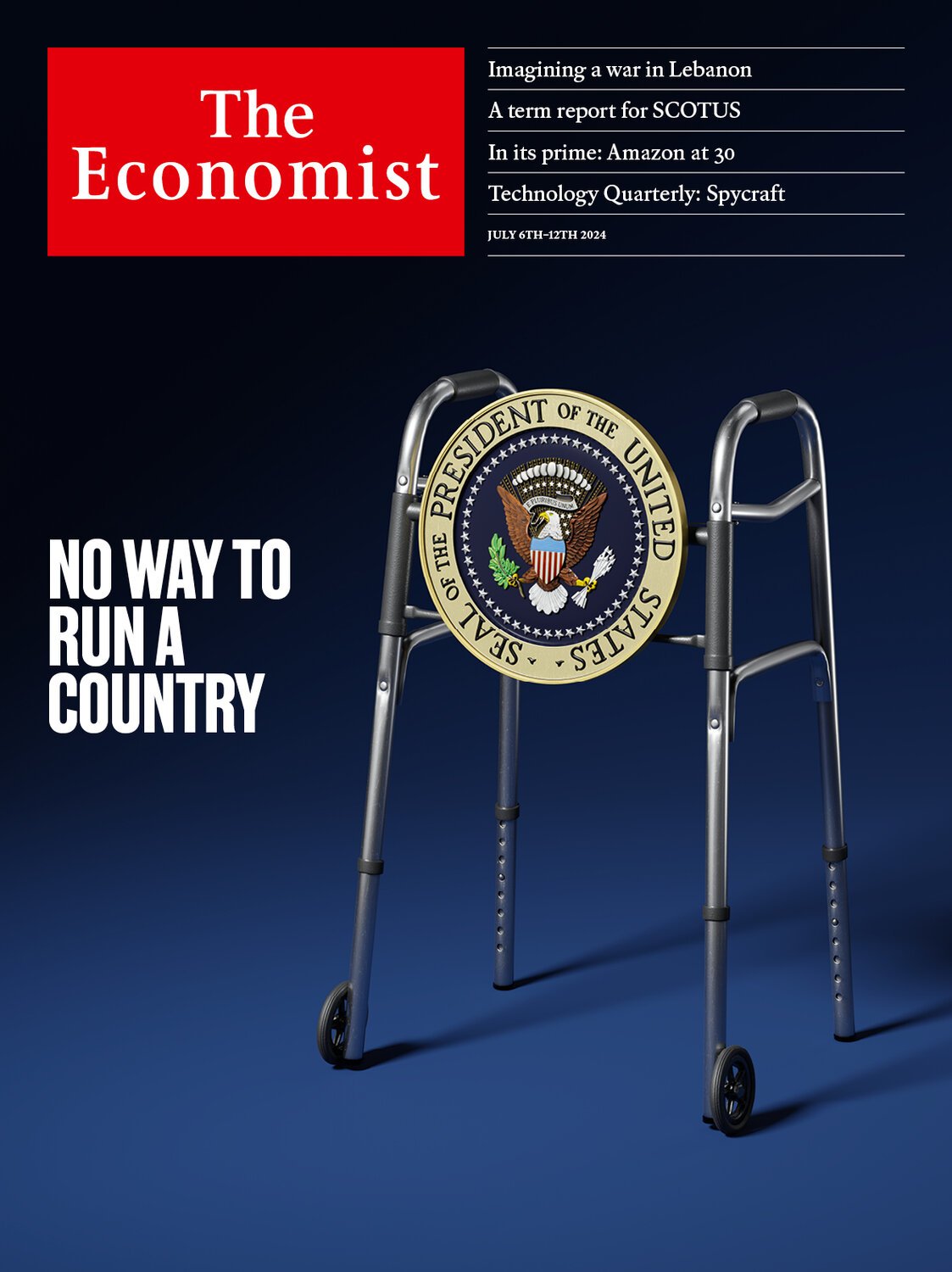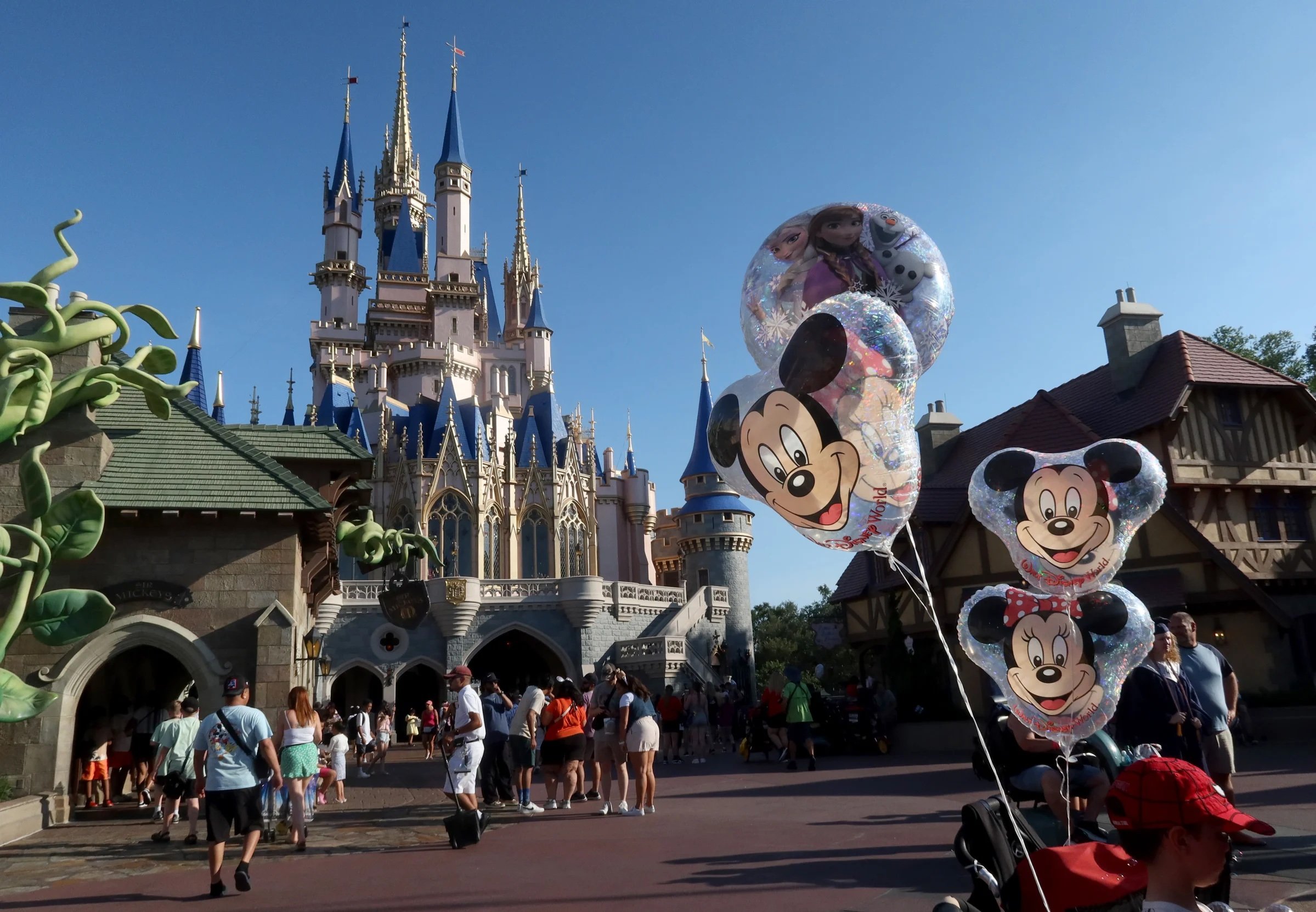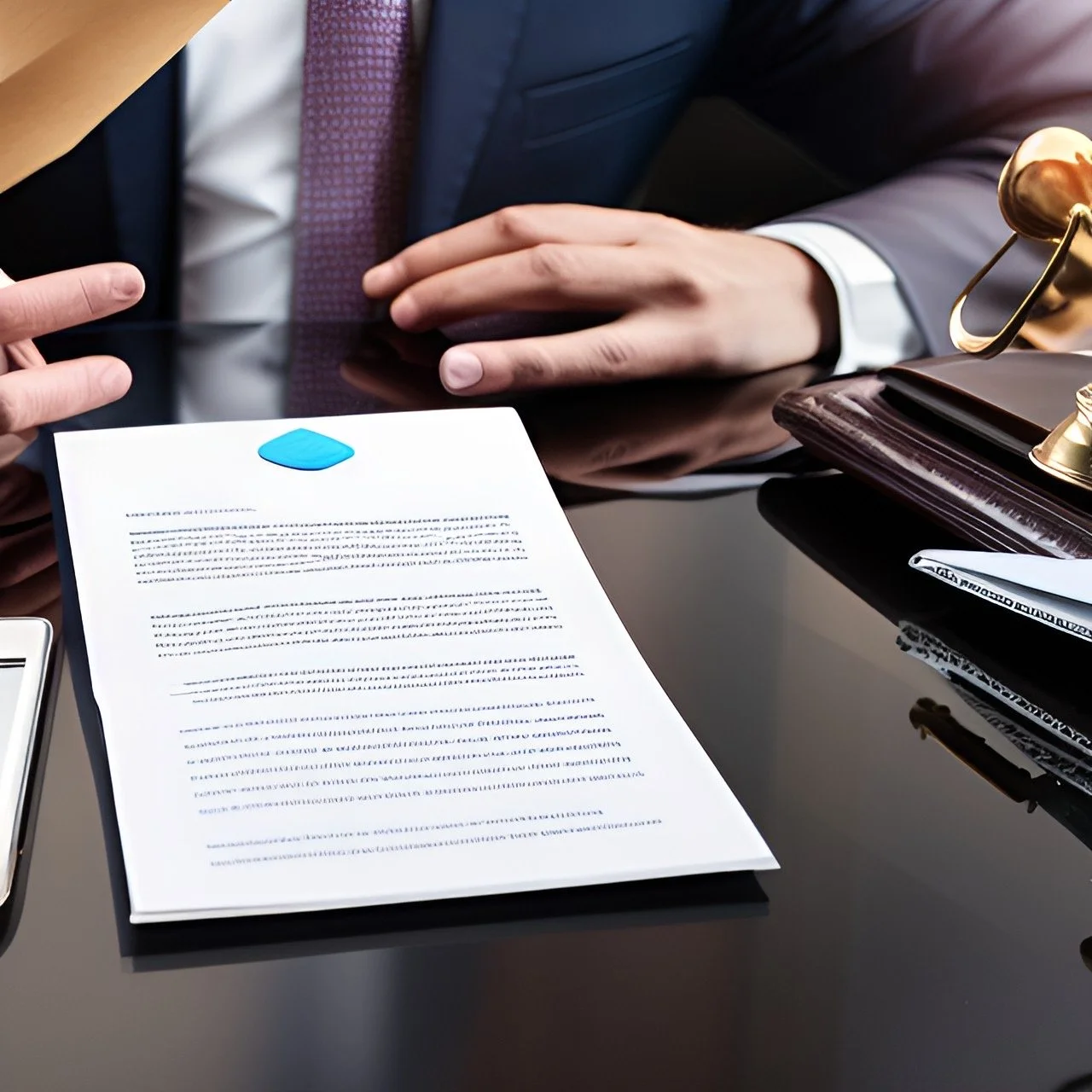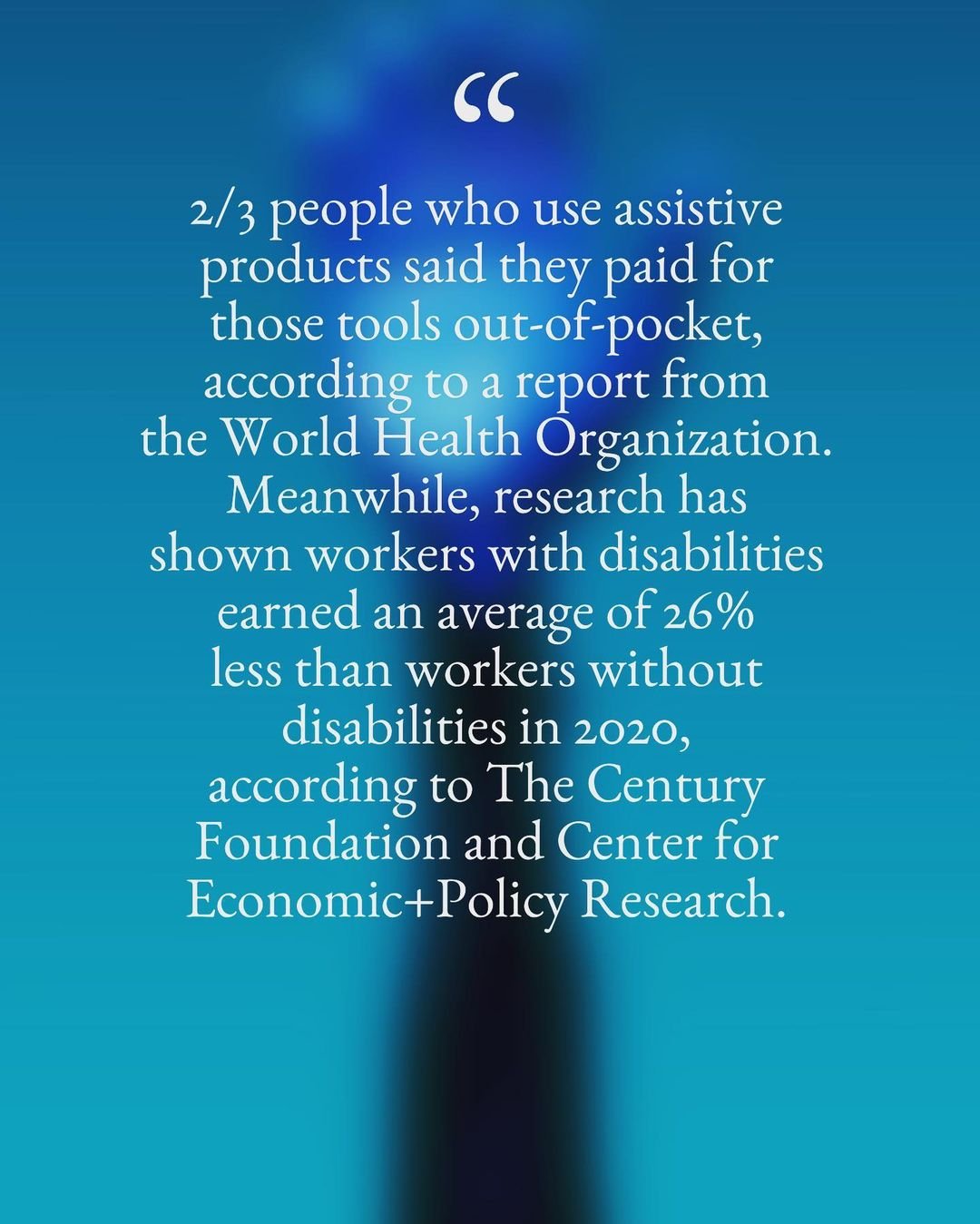Let’s talk about service dogs, speech-to-text, and that weird moment when accessibility becomes “cool” only after it’s gone mainstream.
I had the honor of sitting down with Myles Wallace for his podcast, My Disability Story, ahead of Disability Pride Month. We talked about everything from CP to curb cuts to the public choreography of using an elevator with a service dog. But the heart of it all? Canine Companions® Lovey.
Lovey is trained in over 50 tasks and, yes, smarter than most humans I know before coffee. But she’s not a pet. She’s not a perk. Under the ADA, she’s medical equipment. As essential to me as someone’s cane, glasses, or a wheelchair.
Still, public understanding? Wildly uneven. I shouldn’t have to explain federal law everyday to exist. But here we are.
And while we’re at it—assistive tech isn’t niche. You use it. Every time you dictate a text, use a screen reader, or flip on closed captions in a Starbucks. The difference is: disabled folks were the early adopters. Society just didn’t care until it became “normal.”
That’s the pattern, right? When disabled people use a tool, it’s seen as “special.” When non-disabled people use it, it becomes innovation.
The same goes for remote work. I wasn’t thriving because of the pandemic—I was surviving because finally, the system cracked open just wide enough for access. Now, as RTO mandates creep back in, too many disabled workers are being quietly pushed out, again.
And let’s be real: this isn’t just about me. It’s about how we design workplaces, shape policy, and build culture. Are we building for inclusion—or waiting for exclusion to make the news?
To Myles—thank you. For asking about things most people overlook. For letting me share how bonding with Lovey wasn’t just emotional—it was life-altering. And for giving me space to joke that calling non-disabled people “pre-disabled” might sound like a mafia threat—but also happens to be the truth.
We shouldn’t care about accessibility just because “this could be you someday.” We should care because it’s the right thing. Because humanity means looking out for each other without needing a calendar to tell us when.
So, I’ll ask:
👉 What assistive tech do you rely on every day, even if you’ve never thought of it that way?
👉 How accessible is your workplace—really?
👉 And are you treating accessibility as a one-month moment—or a year-round movement?
Let’s talk. And more importantly—let’s listen.
The Power of Words: Trump's Harsh Views vs. Biden's Compassion
A disabled parking logo is depicted with blood dripping down, symbolizing the erroneous belief that disabled people should die. The scene is a dark and eerie, with the surrounding environment having a grim and foreboding atmosphere, including dark, leafless trees and a misty background.
I can’t stop thinking about President Biden’s address to the nation last night—his first since deciding to exit the 2024 race. His speech was filled with humanity and a focus on inclusion, qualities that starkly contrast with sentiments expressed by Donald Trump, as revealed in a recent TIME Magazine article by Fred Trump III.
Biden’s words from the Oval Office were profound: “We have to decide: Do we still believe in honesty, decency, respect, freedom, justice, and democracy? In this moment, we can see those we disagree with not as enemies but as fellow Americans.” This message of unity and respect is essential, especially as we celebrate the 34th anniversary of the Americans with Disabilities Act. The ADA, passed under the George H.W. Bush administration, is more contested than ever in today’s political climate. I’m not sure it would pass Congress in 2024.
Contrast this with the shocking statements from Donald Trump, as recounted by his nephew Fred Trump III. Fred’s article reveals a chilling disregard for disabled people. President Trump reportedly said at the height of COVID-19, “The shape they’re in, all the expenses, maybe those kinds of people should just die,” in reference to his own blood. These words are not just hurtful; they are a stark reminder of how far we still have to go in fighting for the rights and dignity of all Americans.
Biden’s commitment to disability rights has been evident throughout his administration. His support for updates to Section 508 of the Rehabilitation Act is a critical step forward. “The federal government has an obligation to ensure that its services are accessible to people with disabilities, including its websites and technology,” said Senator Bob Casey, co-sponsor of the proposed updates. This legislation aims to make federal technology accessible to all Americans, ensuring that no one is left behind.
I use a wheelchair. I handle a service dog. I leverage assistive technology to navigate the web due to my visual impairment. These updates are not just necessary; they are vital. It’s not just about physical barriers; it’s about breaking down attitudinal ones as well.
Biden’s words remind us that we are all in this together: “We are a great nation because we are a good people...The power’s in your hands. The idea of America lies in your hands. You just have to keep faith.” In contrast, Trump’s comments reflect a divisiveness that undermines the progress we’ve made and the values we stand for.
As we approach this significant anniversary of the ADA, let’s remember the work that still needs to be done. Let’s continue to fight for a world where everyone, regardless of their abilities, has equal access to opportunities and resources. When given the respect and dignity we deserve, we not only thrive, we persevere. The only thing that needs to die is ableism.
My Uncle Donald Trump Told Me Disabled Americans Like My Son ‘Should Just Die’
No Way to Run a Country? The Harmful Narratives of Ableism in Media
Cover of The Economist magazine dated July 6th-12th, 2024, featuring an image of a walker with the Presidential Seal of the United States and the headline 'No Way to Run a Country’.
As a disability advocate, I am often reminded of the pervasive ableism that infiltrates many aspects of our society. The recent cover of The Economist, depicting a walker with the presidential seal and the caption "No way to run a country," is a stark example of this issue. Regardless of political views or the current debates around President Biden's fitness, framing his capability to govern based on a disability is not only cruel but highlights a deep-seated ableism that must be addressed.
This kind of representation perpetuates harmful stereotypes, suggesting that those who use mobility aids are less capable. Such images can have far-reaching consequences, reinforcing negative perceptions and fostering environments where people with disabilities feel pressured to hide their conditions. The Economist should be ashamed of themselves for this front-page cover and for continuing to push a harmful narrative that deems individuals with disabilities as less competent.
The Economist's cover is not just an isolated incident; it reflects a broader issue within media representation. This portrayal underscores the editorial team's lack of understanding and empathy toward disability. It's a reminder of the significant work needed to educate and shift societal perspectives. Media outlets have a powerful influence on public opinion, and with that power comes the responsibility to portray all individuals fairly and accurately.
This is not the first time we've seen such blatant ableism in politics. Senator John Fetterman faced criticism for using assistive technology to perform his duties, with many questioning his ability to serve. While the office of the President is indeed a different challenge, ableism should have no place in our political discussions. As advocates, we must highlight these issues and push for a more inclusive narrative recognizing the capabilities of all individuals.
Ableist portrayals like The Economist's cover can discourage employees from disclosing their disabilities, fearing judgment and discrimination. This reluctance prevents many from accessing necessary accommodations that could enhance their productivity and well-being. It's crucial that we create workplaces where disability disclosure is met with support and understanding, not prejudice.
To combat these harmful narratives, media organizations must take actionable steps to improve their representation of individuals with disabilities. This includes hiring more people with disabilities in visible roles, consulting with disability advocates when creating content, and committing to ongoing education on disability issues. By doing so, they can help dismantle ableist stereotypes and promote a more inclusive society.
Let's use this moment to spark a conversation about ableism in the media and beyond.
Gatekeeping Magic: The Exclusionary Impact of Disney's New DAS Rules
A view of Walt Disney World in Orlando, Fla
As we celebrate Disability Pride Month, a time to honor the achievements of the disability community, we must also address the setbacks that threaten our progress. The Walt Disney Company's recent changes to its Disability Access Service policy serve as a poignant reminder of how easily strides toward inclusion can be undermined.
Growing up in California, Walt Disney Parks & Resorts were more than just a destination; they were a magical escape from the daily challenges of navigating a world not designed with us in mind. As a wheelchair user and someone living with chronic pain, trips to Disney offered a rare respite where the focus was on fun, not on proving my worth or fighting for basic accommodations. However, Disney’s latest policy changes have turned this escape into yet another battleground for disability rights.
On May 20, Disney instituted a more restrictive policy on who qualifies for its DAS program. Previously, those who "have difficulty tolerating extended waits in a conventional queue environment due to a disability" were eligible. Now, only individuals with "developmental disabilities such as autism or a similar disorder" can request a return time. This change has left many in the disability community, including those with invisible disabilities, excluded and disheartened. This exclusion not only diminishes the magic of Disney but also underscores a larger issue: the gatekeeping of what counts as a disability.
Disney's decision to narrow the criteria for DAS passes is a step backward in disability inclusion. By focusing only on visible or specific types of disabilities, Disney is disregarding the diverse and often invisible challenges that many of us face daily. This policy shift exemplifies a troubling trend where organizations prioritize convenience over comprehensive inclusion, making decisions without consulting key stakeholders from the disability community.
Moreover, too many believe they have unfettered access to our medical histories, forgetting that disclosure of disability is a personal choice. Often, discussions of disability can be triggering and traumatic. The exhaustion and raw exposure of needing to "prove" our disability can become overwhelming. That lack of empathy is dehumanizing.
Historically, Disney has been recognized for its disability inclusion efforts. A spokesperson from Disney told Yahoo News, “Disney is dedicated to providing a great experience for all guests, including those with disabilities.” However, the recent policy change contradicts this commitment, revealing a lack of understanding and empathy toward the diverse needs of the disability community.
As we celebrate Disability Pride Month, let’s remind organizations like Disney that true magic lies in creating spaces where everyone can feel welcome and valued.
Disney's new theme park disability policy sparks anger
Global Accessibility Awareness Day 2023
A futuristic assistive tech concept art with sleek design, neon lights, holographic interface, personalized AI, and a user-friendly experience.
Global Accessibility Awareness Day may officially be two days away, but advocacy isn’t dictated by a calendar. As we prepare to celebrate, I am reminded of both the progress we've made and the challenges that remain.
Recently, a story in YourTango by Nia Tipton highlighted an all-too-familiar story of a disabled passenger who shared in a viral TikTok that she was forced to exit the plane without her mobility aids. Despite having made prior arrangements for wheelchair assistance, she was left stranded on her flight, forced to walk off the plane, tripped, fell, and eventually passed out due to the lack of necessary assistance. She was then rushed through the airport, berated, and made to feel like a burden.
This is not the world we should be living in. This is not the experience anyone should have to go through.
And yet, there is a glimmer of hope. CultofMac.com reports that this week, ahead of WWDC23 Apple previewed some of their upcoming features aimed at those with disabilities. Among these features are 'Live Speech' and 'Personal Voice', these tools allow people with disabilities to type what they want to say and have it spoken aloud, or to have their own speech transformed into clear, synthetic speech. In creating these features, Apple isn't just making their products more accessible; they are affirming our worth, our potential, and our place in the world.
While these advances in technology are promising, challenges persist. As Caroline Casey founder of the Valuable 500 writes in a recent Forbes piece, "Discrimination of people with disabilities is a protracted tale – but this should be a motivator or an opportunity to be accountable and take action." We need to address the systematic issues that continue to marginalize individuals with disabilities, particularly in the workplace.
The facts are stark. Recent research from the Valuable 500 shows that only 3% of leaders would speak out openly about their disability or caregiving role. When we consider that 1 in 4 has a disability, this is troubling. We need to make space for different perspectives, cultivate workplaces where employees are able to be their authentic selves. We need leaders who understand disability does not equate to inability and that our experiences, voices, and insights are not only necessary but also enriching. Companies looking to be more inclusive should look for more than a culture fit. They should strive for a culture add.
On this lead up to to Global Accessibility Awareness Day, let's remember that our journey toward creating an inclusive and equitable society for all, including people with disabilities, is ongoing. It’s not only about installing ramps and elevators or developing speech recognition software—it's about fostering respect, empathy, and understanding. It's about acknowledging that disability is not a deficit but simply a different way of experiencing the world.
How AI Can Make Disabled People Stronger Advocates
Recently, a neighbor in my apartment complex became increasingly irate anytime Canine Companions® Pico and I would pass her door. She claimed his incidental shedding as we walked past was done intentionally, and she didn't appreciate his ruining her welcome mat, which she had placed in a public hallway. Her disdain became so pervasive she was unwilling to engage in civil discourse.
When I raised my concerns with the property manager, I was met with the suggestion that I relocate if we couldn't find a "peaceful solution." It was a frustrating and exhausting experience.
I went into advocacy mode. I knew the laws. I knew I could address the situation from the perspective of the ADA, housing laws, and even state fire codes. But I just didn't have the energy. I thought briefly about dropping the issue completely, but I knew that would be to my detriment as the situation was ongoing.
And then it came to me: AI is my friend.
I turned to AI to craft a letter to my leasing office, documenting our meeting, their response, and the concerns I still had. I worked with the AI in much the same way I would engage with a friend or colleague at first. Imagine explaining what happened to them over text. I didn't think about it too much. I simply documented what happened as best I could without being overly concerned with whether I was doing it "right."
As I progressed, I wanted something with a bit more force, something harder for management to dismiss. So I tweaked my approach. I asked the AI to cite relevant local laws that might strengthen my position. Almost instantly, I was presented with research pertaining to building safety, means of egress, and fire codes, as well as a bit of legal language.
No system is perfect, and I still did my due diligence in verifying the accuracy; nothing will ever replace the human element and the lived experiences that shape advocacy work. But I had a very strong foundation in record time. The hours and aggravation saved, the research placed right in front of me in the blink of an eye? I couldn't help but think of the old Mastercard commercial.
Comcast Internet: $50 a month
Subscription to ChatGPT-4: $20 a month
Energy saved as AI helps you advocate? Priceless.
AI is the ultimate life hack, and I can't wait to see what's next. This technology is here, and used wisely, can be the ultimate energy saver. Yes, it's only as good as its inputs and the questions we ask, but that is the very nature of the human brain too. When we ask better questions, we get better answers. By leveraging these technologies, disabled people can continue to do the advocacy that fuels us without feeling burnt out by the nitty-gritty. For those just starting on their advocacy journey, the playing field is instantly leveled. The question isn't "Should we be using this technology?" Rather, the focus should be on how.
Global Accessibility Awareness Day
"The truth of the matter is, Netflix Director of Product Accessibility Heather Dowdy explained, the disability community “has been here all along.” As such, it makes sense to want to normalize and tell their stories. Indeed, the pandemic has only reemphasized the importance of accessibility and assistive technologies."
Forbes, Steven Aquino
-
Today we celebrate Global Accessibility Awareness Day, highlighting the advances making technology and entertainment more accessible to the disability community. Oftentimes, seen as an afterthought, these enhancements are vital to ensuring disabled people can participate equitably as consumers of entertainment as well as fully leverage a company’s complete product line readily and with full confidence their needs will be met.
The disability community accounts for 20% of the global population, the largest underserved minority. When you consider accessibility for one, you enable it for all. So many of the tools and technologies in wide use today were initially developed for disabled people, and yet are seen as ubiquitous today. Think captions, speech to text, or screen adjustments on mobile devices.
In recent days companies like Apple, and Microsoft have rolled out enhancements to their product lines aimed at people with disabilities. Apple, for example unveiled Door Detection, helping those with vision impairments more easily navigate their surroundings. Additionally, they’ve improved functionality of the Apple Watch allowing it to be controlled through the iPhone; a larger screen with more real estate that also allows users the benefit of assistive technology already present within iOS— features like voiceover and magnification— not yet independently available on Apple watch.
For its part, Microsoft announced Thursday in a company blog post recent improvements included in Windows 11 that aim to make its OS more accessible, including Live Captions and new natural voices for users of screen readers. Last week at its annual Microsoft Accessibility Summit, a slew of adaptive technology for computing and gaming was also unveiled. Additionally, Microsoft touted its recruitment efforts to improve disability representation within the company.
A new study from Microsoft Education found that 84% of teachers say it’s impossible to achieve equity in education without accessible learning tools. And 87% agree that accessible technology can help not only level the playing field for students with disabilities but also generate insights that help teachers better understand and support all their students.
Accessibility benefits everyone. While companies like Netflix, Apple, and Microsoft are to be applauded for their progress, they represent merely a step forward in equity. We must continue to push all companies, regardless of overall size, or market share to fully embrace equality for all. To that end, I look forward to the day when Global Accessibility Awareness Day ceases to exist and it fades into the background.
Over 3.5 Billion People Will Need Assistive Products by 2050: Report
About two in three people who use assistive products said they paid for those tools out-of-pocket, according to a report from the World Health Organization. Meanwhile, research has shown workers with disabilities earned an average of 26 percent less than workers without disabilities in 2020, according to The Century Foundation and Center for Economic and Policy Research.
While some assistive tools are easily available, Maria Town, the president and CEO of AAPD Foundation said more "specialized" products can be "very costly," even if the individual in need has public or private health insurance.
Meghan Roos, Newsweek
I count myself among the 2.5 billion people who currently use assistive technology daily. Often, this is technology paid for out of my own pocket.
My wheelchair, leverages assistive technology in the form of power assist wheels. This technology enables me to move more freely and easily through different terrain without putting undue stress on my body in numerous ways; especially while working with Canine Companions® Pico as we navigate a major city with hills and distinct types of terrain. While insurance did cover some of this, a significant percentage came out-of-pocket. Without this technology I would not be able to navigate my life safely and easily. It has provided a freedom and flexibility that I would otherwise not have.
For years, I struggled with typing; causing strain and stress on my hands, fingers, and even eyesight. While I can effectively use voice dictation today and can attest to how much it has streamlined my workflow and saved me undue physical stress, the startup costs were innumerable.
For many people with disabilities, assistive technology is not a luxury, it is not a “nice to have,” nor is it something to ogle over and think about how cool it would be if you had it. It is what enables us to participate freely and easily in society that is not built with us in mind. We use this technology to level the playing field. However, it can and does often come at significant cost. Colloquially referred to within the disability community as the “Crip Tax,” it is the cost-of-living increase as a consequence of living life as a disabled person.
That is just one of the many reasons why equal wages are so important for everybody. Disabled people earn seventy-four cents on the dollar compared to our nondisabled colleagues. This is why, in every industry, every profession, and every company, representation matters. Disabled people need support from leadership not only so we can thrive at work with a supportive team that understands and appreciates our needs for assistive technology, but further so we can advance our careers on-par with our nondisabled colleagues and close the wage gap.
For us it is the difference between inclusion and exclusion, feeling seen, or feeling ostracized. Feeling validated or cast aside.
Over 3.5 Billion People Will Need Assistive Products by 2050: Report








